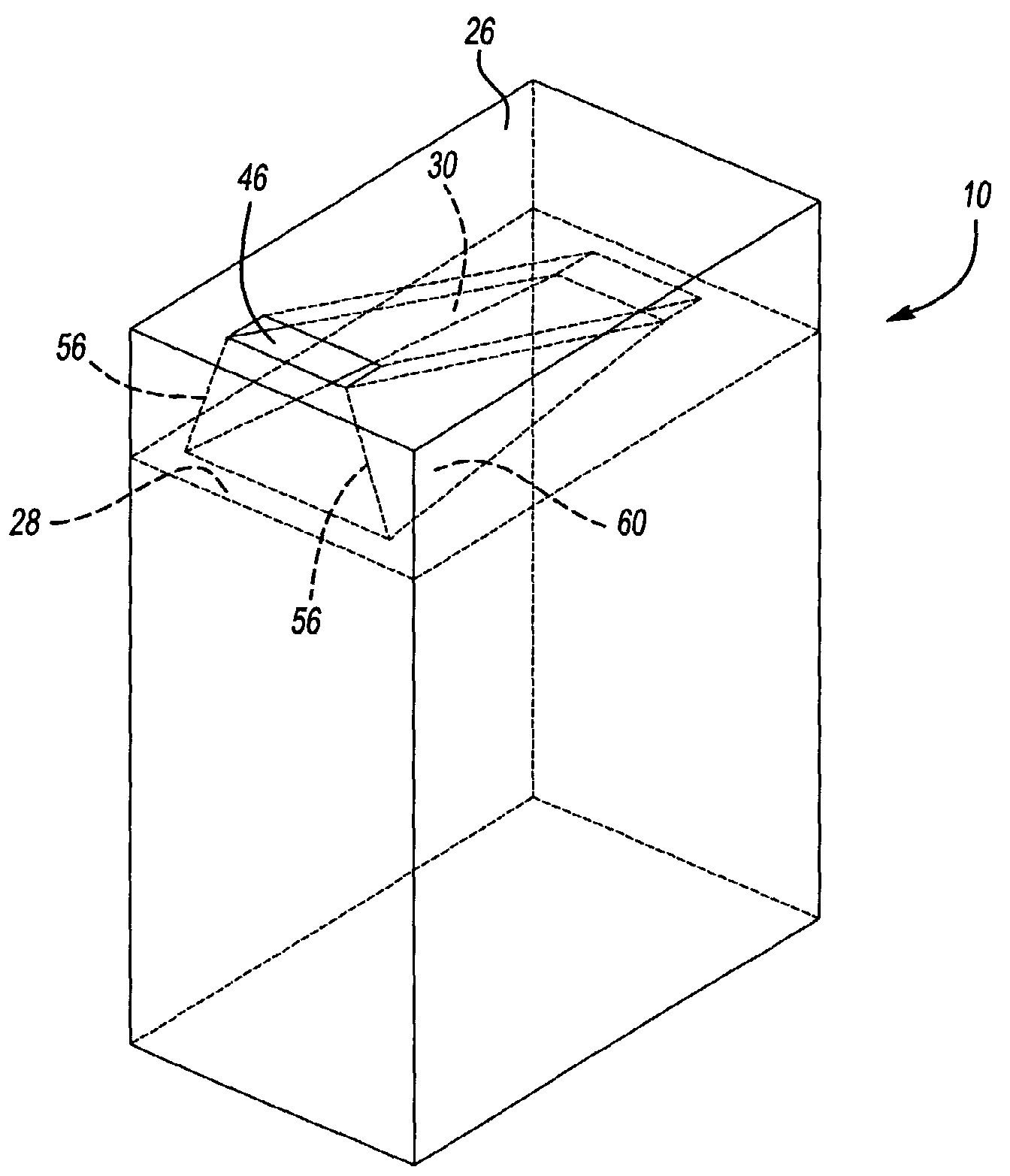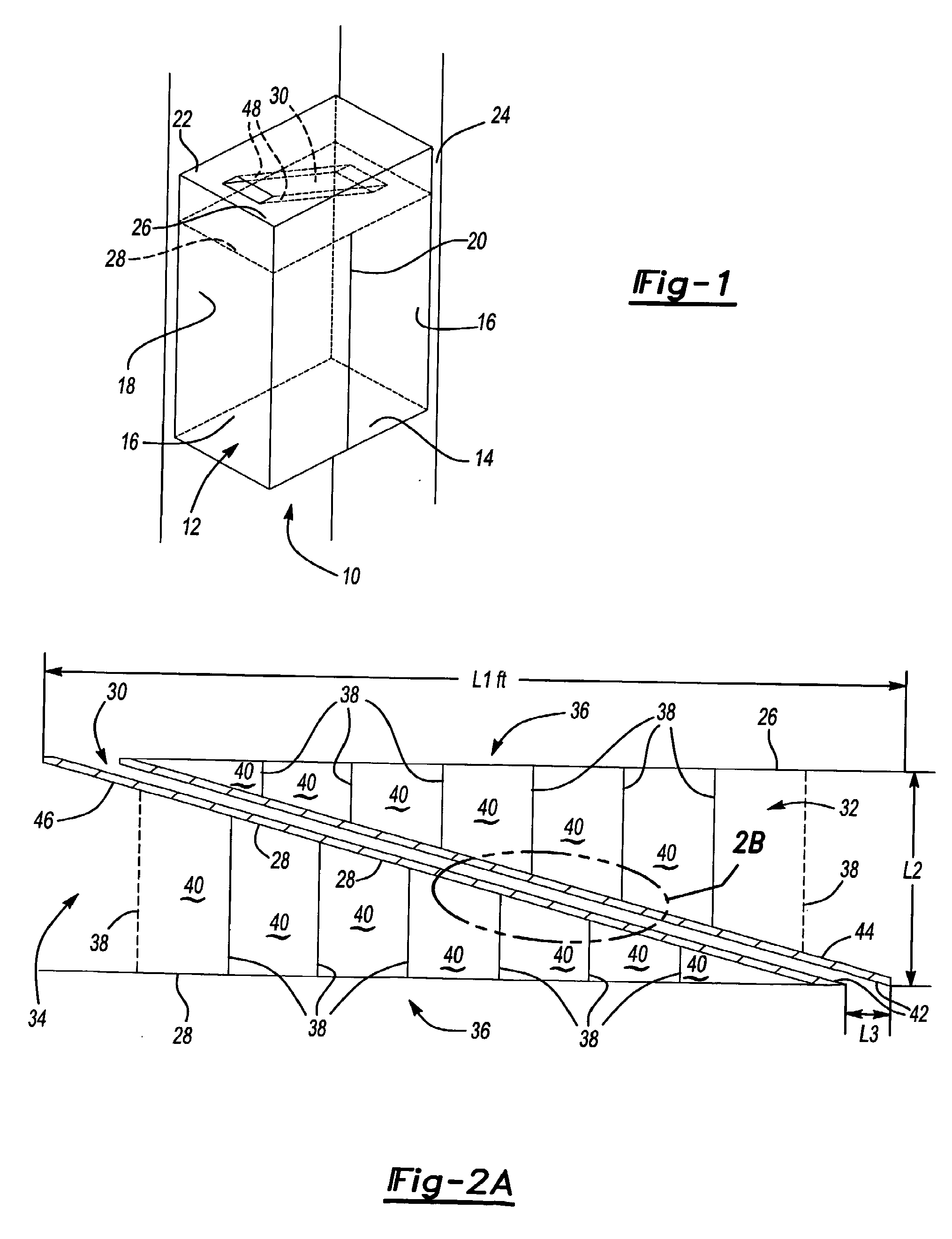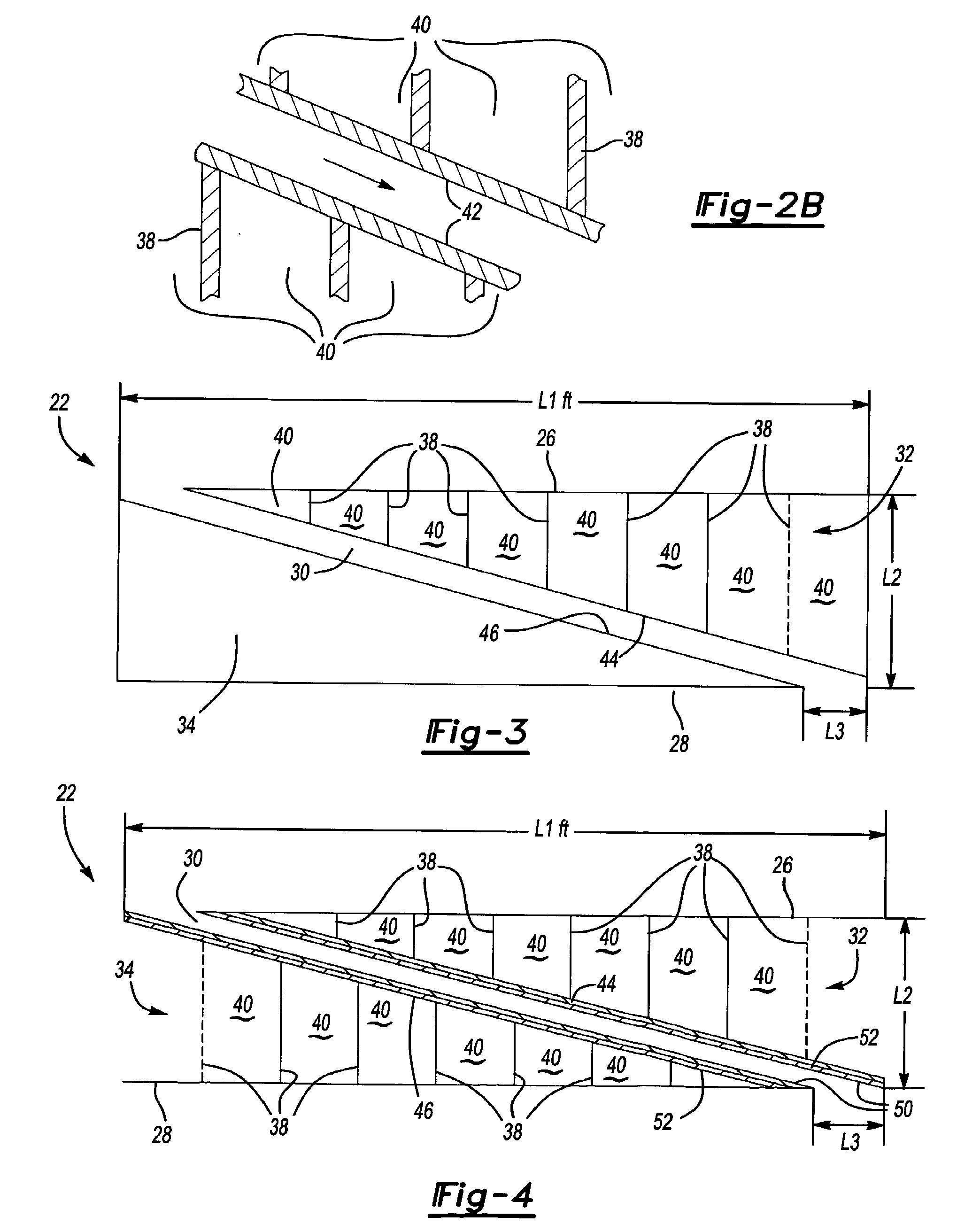Elevator Cab Ceiling with Dissipative Ventilation Channel
- Summary
- Abstract
- Description
- Claims
- Application Information
AI Technical Summary
Benefits of technology
Problems solved by technology
Method used
Image
Examples
Embodiment Construction
[0016]As seen in FIG. 1, an elevator cab 10 includes a passenger compartment 12 defined by a floor 14, a pair of side walls 16, a back wall 18, a pair of elevator doors 20, and a ceiling 22. An elevator machine (not shown) is used to move the elevator cab 10 within an elevator hoistway 24.
[0017]The ceiling 22 includes a first ceiling panel 26 and a second ceiling panel 28. The first and second ceiling panels 26 and 28 are spaced apart from each other and are positioned in an overlapping relationship. An air duct or ventilation channel 30 extends between the first and second ceiling panels 26 and 28. In one example, the ventilation channel 30 extends from the first ceiling panel 26 to the second ceiling panel 28 at least partially at an oblique angle relative to the first ceiling panel 26. It should be understood that while the ventilation channel 30 is shown as being generally straight, the ventilation channel 30 could be curved to accommodate lighting fixtures or other components (...
PUM
| Property | Measurement | Unit |
|---|---|---|
| Angle | aaaaa | aaaaa |
| Noise | aaaaa | aaaaa |
Abstract
Description
Claims
Application Information
 Login to View More
Login to View More - R&D
- Intellectual Property
- Life Sciences
- Materials
- Tech Scout
- Unparalleled Data Quality
- Higher Quality Content
- 60% Fewer Hallucinations
Browse by: Latest US Patents, China's latest patents, Technical Efficacy Thesaurus, Application Domain, Technology Topic, Popular Technical Reports.
© 2025 PatSnap. All rights reserved.Legal|Privacy policy|Modern Slavery Act Transparency Statement|Sitemap|About US| Contact US: help@patsnap.com



